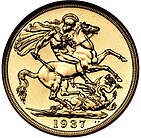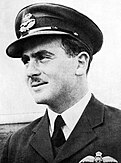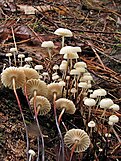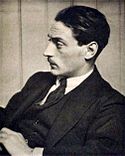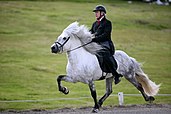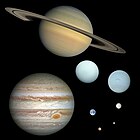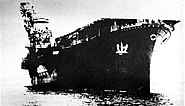Wikipedia:Today's featured article/June 2024
| << | Today's featured articles for June 2024 | >> | ||||
|---|---|---|---|---|---|---|
| Su | Mo | Tu | We | Th | Fr | Sa |
| 1 | ||||||
| 2 | 3 | 4 | 5 | 6 | 7 | 8 |
| 9 | 10 | 11 | 12 | 13 | 14 | 15 |
| 16 | 17 | 18 | 19 | 20 | 21 | 22 |
| 23 | 24 | 25 | 26 | 27 | 28 | 29 |
| 30 | ||||||
June 1
Ludwigsburg Palace is a 452-room palace complex of 18 buildings in Ludwigsburg, Baden-Württemberg, Germany. It is the largest palatial estate in the country and has been called the "Versailles of Swabia". Eberhard Louis, Duke of Württemberg, began construction of the palace in 1704. The son of his successor, Charles Eugene, completed it and refurbished parts in the Rococo style, especially its theatre. Charles Eugene abandoned the palace in 1775, and it began a decline until the future Duke, and then King, Frederick moved in in 1795. As King, Frederick, and his Queen, Charlotte, renovated the entirety of the palace in the Neoclassical style. The palace was opened to the public in 1918. It underwent periods of restoration, including for its tricentenary in 2004. It has hosted the Ludwigsburg Festival annually since 1947. The palace is surrounded by gardens named Blooming Baroque (Blühendes Barock), laid out in 1954 as they might have appeared in 1800. (Full article...)
June 2
John Richard Clark Hall (1855 – 1931) was a British scholar of Old English, and a barrister. Hall's A Concise Anglo-Saxon Dictionary (shown) became a widely used work upon its 1894 publication, and after multiple revisions remains in print as of 2021. His 1901 prose translation of Beowulf was still the canonical introduction to the poem into the 1960s; some later editions included a prefatory essay by J. R. R. Tolkien. Hall's other work on Beowulf included a metrical translation in 1914, and the translation and collection of Knut Stjerna's Swedish papers on the poem into the 1912 work Essays on Questions Connected with the Old English Poem of Beowulf. In the final decade of his life, Hall's writings took to a Christian theme. The Society for Promoting Christian Knowledge published two of his works in this time: Herbert Tingle, and Especially his Boyhood, and Birth-Control and Self-Control. Hall worked as a clerk at the Local Government Board in Whitehall, becoming principal clerk in 1898. (Full article...)
June 3
The Donner Party was a group of American pioneers who set out for California in a wagon train, but became snowbound in the Sierra Nevada mountains in November 1846. Running out of food, some resorted to cannibalism to survive. The journey west usually took between four and six months, but the Donner Party had been slowed by following a new route called the Hastings Cutoff, which crossed the Rocky Mountains' Wasatch Range and the Great Salt Lake Desert in present-day Utah. They lost many cattle and wagons in the rugged terrain, and divisions formed within the group. Their food supplies ran low after they became trapped by an early, heavy snowfall high in the mountains. In mid-December some of the group set out on foot and were able to obtain help. Of the 87 members of the party, 48 survived to reach California. Historians have described the episode as one of the most spectacular tragedies in California history. (Full article...)
June 4
550 Madison Avenue is a postmodern skyscraper on Madison Avenue between 55th and 56th Streets in New York City. Designed by Philip Johnson and John Burgee with associate architect Simmons Architects, the building was completed in 1984. It is a 647-foot-tall (197-meter), 37-story office tower with a facade made of pink granite. It was originally the headquarters of AT&T Corp., which relocated from 195 Broadway, the company's previous headquarters. Following the breakup of the Bell System in 1982, AT&T spun off subsidiary corporations and never occupied the entire building as it had originally intended. The building later became the American headquarters of Sony. An annex to the west was demolished and replaced in the early 2020s. Opinion of the building has been mixed ever since its design was first announced in March 1978. The New York City Landmarks Preservation Commission designated the building's exterior as a landmark in 2018. (Full article...)
June 5
The double sovereign is a gold coin of the United Kingdom with a nominal value of two pounds sterling (£2). It features the reigning monarch on its obverse and, most often, Benedetto Pistrucci's depiction of Saint George and the Dragon (shown) on the reverse. It was rarely issued in the first century and a half after its debut in 1820, usually in a new monarch's coronation year or to mark the institution of a new coinage portrait of the monarch. In addition to the usual coinage in Britain, specimens were struck at Australia's Sydney Mint in 1887 and 1902. Most often struck as a proof coin. the double sovereign has been issued for circulation in only four years, and few examples worn from commercial use are known. It is now a collector and bullion coin, and has been struck by the Royal Mint most years since 1980. In some years, it has not been issued and the Royal Mint instead placed gold versions of the commemorative £2 piece in the annual gold proof sets. (Full article...)
June 6

Saving Private Ryan is a 1998 American epic war film directed by Steven Spielberg and written by Robert Rodat. Set in 1944 in France during World War II, it follows a group of soldiers, led by Captain John Miller (Tom Hanks), on their mission to locate Private James Francis Ryan (Matt Damon), who is to be brought home after his three brothers are killed in action. Inspired by the books of Stephen E. Ambrose and accounts of the deaths of members of a single family such as the Niland brothers, Rodat drafted the script and Paramount Pictures hired him to finish the writing. Spielberg wanted to make Saving Private Ryan as authentic as possible, and hired Frank Darabont and Scott Frank to perform uncredited rewrites based on research and interviews with veterans. The cast went through a week-long boot camp to understand the soldier experience. Filming took place from June to September 1997 in England and Ireland. Saving Private Ryan earned critical acclaim for its graphic portrayal of combat. (Full article...)
June 7
Munsey's Magazine was an American magazine founded by Frank Munsey in 1889 as Munsey's Weekly. This was not successful, and Munsey converted it to a monthly in 1891, printing both fiction and non-fiction. In 1893 the price was reduced from 25 to 10 cents and circulation rose to over 250,000 issues. The same year Munsey became one of the first publishers to regularly feature a pretty girl on the cover. Circulation was also helped by the liberal use of illustrations, and reached a peak of about 700,000 in 1897, declining in the 1910s. Well-known writers appeared, including O. Henry, Arthur Conan Doyle, Edgar Rice Burroughs, P. G. Wodehouse, and Joseph Conrad. In 1929 it was merged with Argosy, another of Munsey's magazines. Magazine historians consider Munsey's to have started a revolution in magazine publishing by setting a low price to increase circulation, and attracting sufficient advertising revenue to make a substantial profit. Other magazines quickly followed Munsey's example. (Full article...)
June 8
Bill Newton (8 June 1919 – 29 March 1943) was an Australian recipient of the Victoria Cross, honoured for his actions as a bomber pilot in Papua New Guinea during March 1943. Raised in Melbourne, he joined the Citizen Military Forces in 1938 and enlisted in the Royal Australian Air Force (RAAF) in February 1940. He served as a flying instructor in Australia before being posted to No. 22 Squadron, which began operating Boston light bombers in New Guinea late in 1942. Having just taken part in the Battle of the Bismarck Sea, he was on his fifty-second mission when he was shot down. Newton was still posted as missing when given the Victoria Cross in October 1943. It later emerged that he was captured by the Japanese and beheaded on 29 March. Newton was the only Australian airman to receive a Victoria Cross for action in the South West Pacific theatre of World War II, and the sole Australian to be so decorated while flying with an RAAF squadron. (Full article...)
June 9
The Ecstatic is the fourth album by American rapper Mos Def (pictured), released by Downtown Records on June 9, 2009. Singer Georgia Anne Muldrow and rappers Slick Rick and Talib Kweli were guest vocalists. The album has been described by music journalists as a conscious and alternative hip hop record. Mos Def's raps about global politics, love, spirituality, and social conditions are informed by Black internationalism and Pan-Islamic ideas. The album's loosely structured, lightly reverbed songs use unconventional time signatures and samples taken from Afrobeat, soul, Eurodance, jazz, reggae, Latin, and Middle Eastern music. The Ecstatic charted at number nine on the Billboard 200 in its first week of release and eventually sold 168,000 copies. A widespread critical success, The Ecstatic was viewed as a return to form for Mos Def and one of the year's best albums. He performed concerts to support the record in North America, Japan, Australia, and the United Kingdom. (Full article...)
June 10
Marasmius rotula, the pinwheel mushroom, is a fungus in the family Marasmiaceae. Widespread in the Northern Hemisphere, it was first described scientifically in 1772 by Giovanni Antonio Scopoli. The mushrooms are characterized by thin whitish caps up to 2.0 cm (0.8 in) wide that are sunken in the center and pleated with scalloped margins. The wiry black hollow stalks measure up to 8.0 cm (3.1 in) long by 1.5 mm (0.06 in) thick. On the underside of the caps are widely spaced white gills, attached to a collar encircling the stalk. The mushrooms grow in groups or clusters on decaying wood such as moss-covered logs and stumps. Spore release is dependent upon sufficient moisture. Dried mushrooms may revive after rehydrating and release spores for up to three weeks, much longer than most gilled mushrooms. Although the mushrooms are not generally considered edible, they produce a unique peroxidase enzyme that is attracting research interest for use in bioengineering applications. (Full article...)
June 11
Ronald Reagan (1911–2004) was an American politician and actor who served as the 40th president of the United States from 1981 to 1989. Reagan graduated from Eureka College in 1932 and began to work as a sports broadcaster in Iowa. In 1937, he moved to California, and became a well-known film actor there. From 1947 to 1952, and from 1959 to 1960, Reagan served as the president of the Screen Actors Guild. He was defeated in his run for the Republican presidential nomination in 1968 as well as 1976, but won both the nomination and election in 1980. As president, Reagan implemented new political initiatives as well as economic policies, advocating a laissez-faire philosophy, but the extent to which these ideas were implemented is debatable. The policies, dubbed "Reaganomics," included substantial tax cuts implemented in 1981. (Full article...)
June 12
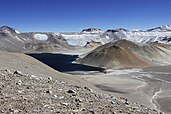
Incapillo is a Pleistocene-age caldera – a depression formed by the collapse of a volcano – in the La Rioja Province of Argentina. It is part of the southernmost volcanic centre in the Andean Central Volcanic Zone (CVZ). Subduction of the Nazca Plate beneath the South American Plate is responsible for most of the volcanism in the CVZ. Volcanism commenced in the Incapillo region 6.5 million years ago, forming the high volcanic edifices of Monte Pissis, Cerro Bonete Chico and Sierra de Veladero. Incapillo is known to have erupted the Incapillo ignimbrite 0.52 ± 0.03 and 0.51 ± 0.04 million years ago; this has a total volume of about 20.4 cubic kilometres (4.9 cu mi). A caldera with dimensions of 5 by 6 kilometres (3.1 mi × 3.7 mi) formed during the eruptions. Later volcanism generated more lava domes within the caldera and a debris flow in the Sierra de Veladero. The lake within the caldera may overlie an area of ongoing hydrothermal activity. (Full article...)
June 13
The Battle of Villers-Bocage (wreckage pictured) took place on 13 June 1944 during WWII. Following the D-Day landings on 6 June, the Germans established defences in front of Caen. The British attacked in an attempt to exploit a gap in the German defences west of the city. They reached Villers-Bocage without incident in the morning but were ambushed by Tiger I tanks as they left the town and numerous tanks, anti-tank guns and transport vehicles were destroyed. The Germans then attacked the town but were repulsed. The British withdrew west of Villers-Bocage that evening and repulsed another attack the next day. The British conduct in the battle was controversial because their withdrawal marked the end of the post–D-Day "scramble for ground" and the start of an attritional battle for Caen. Some historians wrote that the British attack was a failure caused by a lack of conviction among some senior commanders; others judged the British force to be insufficiently strong for the task. (Full article...)
June 14
The Spider was an American pulp magazine published by Popular Publications from 1933 to 1943. Every issue included a lead novel featuring The Spider, a heroic crime-fighter. The novels in the first two issues were written by R. T. M. Scott; thereafter every lead novel was credited to "Grant Stockbridge", a house name. Norvell Page, a prolific pulp author, wrote most of these. Unlike some contemporary pulp heroes, The Spider was willing to kill criminals, and when he did so he left a red spider inked on his victims. Page in particular wrote stories with violent storylines, often with science-fiction plot devices. Continuity from novel to novel was often disregarded, with characters killed in one issue appearing unscathed in later issues. Each magazine also featured short stories, occasionally including elements of horror fiction. Most of the cover art was painted by John Newton Howitt or Rafael de Soto. The magazine was cancelled in 1943 due to a paper shortage caused by World War II. (Full article...)
June 15
Kevin Gately died on 15 June 1974 as the result of a head injury received in the Red Lion Square public disorder in London while protesting against the National Front, a far-right, fascist party. Gately, a 20-year-old student, was not a member of any organisation. On the day, the National Front held a march through central London in support of the expulsion of immigrants. A counter-demonstration was planned by Liberation, an anti-colonial pressure group. When the Liberation march reached Red Lion Square, the International Marxist Group twice charged the police cordon blocking access to Conway Hall (pictured). Police reinforcements forced the demonstrators out of the square. Gately was found unconscious on the ground. He was taken to hospital and died later that day. A public inquiry into the events was conducted by Lord Scarman, who found no evidence that Gately had been killed by the police, although he found fault with some police actions. There was further violence associated with National Front marches and the counter-demonstrations they faced, including in Birmingham, Manchester, the East End of London (all 1977) and in 1979 in Southall, which led to the death of Blair Peach. (Full article...)
June 16
Whisky Galore! is a British comedy film produced by Ealing Studios and released on 16 June 1949, starring Basil Radford, Bruce Seton, Joan Greenwood and Gordon Jackson. The directorial debut of Alexander Mackendrick, it was based on Compton Mackenzie's 1947 novel Whisky Galore, and written by him and Angus MacPhail. Inspired by the 1941 wreck of the SS Politician, the story concerns a shipwreck off a fictional Scottish island. The islanders, who have run out of whisky because of wartime rationing, salvage cases of it from the ship, against the opposition of the local Customs and Excise men. Like other Ealing comedies, Whisky Galore! explores the actions of a small group facing and overcoming a more powerful opponent. The film was well received on release; renamed Tight Little Island, it became the first film from the studios to achieve box office success in the US. It was followed by Rockets Galore!, a sequel. A remake was released in 2016. (Full article...)
June 17
The Icelandic horse is a breed of horse developed in Iceland. Developed from ponies brought to Iceland by Norse settlers in the 9th and 10th centuries, the breed is mentioned in Icelandic literature and historical records. They are long-lived, hardy, and have few diseases in their native country. In addition to the gaits typical of other horse breeds, many Icelandic horses can also do the tölt (pictured) and the flying pace. The only breed of horse in Iceland, sizable populations exist in Europe and North America. They are used for sheepherding work in Iceland, leisure, showing, and racing. Selective breeding and natural selection with the Icelandic climate developed them into their current form. In the 1780s, much of the breed was killed after a volcanic eruption at Laki. The first breed society for the Icelandic horse was created in Iceland in 1904; the breed is now represented by organizations in 19 nations organized under the International Federation of Icelandic Horse Associations. (Full article...)
June 18
A planet is a large, rounded astronomical body that is neither a star nor a stellar remnant. The archetypal examples are eight planets in the Solar System: the four terrestrials Mercury, Venus, Earth, and Mars, and the four giant planets Jupiter, Saturn, Uranus, and Neptune. The term was initially used to denote the Sun, the Moon, and the five naked-eye planets that move across the background of the stars: they historically were seen as having associations with the gods. As scientific knowledge advanced, human perception of the planets changed. Copernicus suggested that the planets orbited the Sun and that the Earth was itself a planet, and the development of the telescope led to a broadening of the definition to accommodate other discoveries within and beyond the Solar System. Many extrasolar planets display features unseen in the Solar System. The International Astronomical Union defines a planet in the Solar System to have cleared its neighbourhood of other bodies, and that extrasolar planets should orbit stars and not be large enough to support deuterium fusion; however, many planetary scientists continue to apply the word "planet" more broadly, including dwarf planets, planetary-mass moons, rogue planets, and brown dwarfs. (Full article...)
June 19
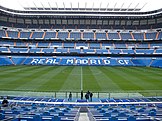
The 1964 European Nations' Cup final in football was held at the Santiago Bernabéu Stadium, Madrid, on 21 June 1964, to decide the winner of the 1964 European Nations' Cup. (now the UEFA European Football Championship). The match was contested by Spain and the defending champions, the Soviet Union. En route to the final, Spain defeated Romania, Northern Ireland and the Republic of Ireland over two-legged ties before beating Hungary in the semi-final. The Soviet Union received a bye in the qualifying round before beating Italy, Sweden and Denmark. In the sixth minute, Marcelino dispossessed Valentin Ivanov and crossed for Chus Pereda, who scored to give Spain a 1–0 lead. Two minutes later, Viktor Anichkin passed to Galimzyan Khusainov, who equalised. With six minutes remaining, Pereda beat Anichkin and played in a cross which Viktor Shustikov failed to clear, before Marcelino headed the winning goal inside the near post. Spain won, 2–1 to win their first European Championship title.(Full article...)
June 20
Hiyō (Flying Hawk) was the name ship of her class of two aircraft carriers of the Imperial Japanese Navy. Begun as the ocean liner Izumo Maru in 1939, she was purchased by the Navy Ministry in 1941 for conversion to an aircraft carrier. Completed shortly after the Battle of Midway in June 1942, she participated in the Guadalcanal Campaign, but missed the Battle of the Santa Cruz Islands in October because of an electrical generator fire. The carrier's aircraft were disembarked several times and used from land bases in battles in the South West Pacific. Hiyō was torpedoed in mid-1943 and spent three months under repair. She spent most of the next six months training and ferrying aircraft before returning to combat. She was sunk by a gasoline-vapour explosion caused by an American torpedo hit during the Battle of the Philippine Sea on 20 June 1944 with the loss of 247 officers and ratings, about a fifth of her complement. (This article is part of a featured topic: Hiyō class aircraft carrier.)
June 21
The giraffe is a large African hoofed mammal belonging to the genus Giraffa. It is known for its extremely long neck and legs, its horn-like ossicones, and its spotted coat patterns. Traditionally, giraffes have been thought of as one species, but more recent evidence has proposed dividing them into multiple species. Giraffes usually inhabit savannahs and woodlands. Their food source is leaves, fruits, and flowers of woody plants, primarily acacia species, which they browse at heights most other herbivores cannot reach. Giraffes live in herds of related females and their offspring or bachelor herds of unrelated adult males, but are gregarious and may gather in large aggregations. Females bear sole responsibility for rearing the young. Giraffes have been featured in paintings, books, and cartoons. Giraffes are assessed as Vulnerable from a conservation perspective by the IUCN. They are found in numerous national parks and game reserves. (Full article...)
June 22
Capri-Sun is a brand of juice concentrate–based drinks manufactured by the German company Wild and regional licensees. Rudolf Wild invented the drink in 1969 and introduced it in West Germany as Capri-Sonne. It is now sold in over 100 countries, with licensees including Kraft Foods in the United States and Coca-Cola Europacific Partners in parts of Europe. It is one of the most popular juice brands in the world. As of 2023, roughly 6 billion pouches are sold per year globally, packaged in laminated foil vacuum Doy-N-Pack pouches, with which the brand has become strongly associated. Capri-Sun's main products are high in sugar, although lower than many competitors. Characterizations of the juice drinks as "all-natural" have led to conflict in several countries American parents often regard Capri-Sun, whose best-known flavor is orange, as healthy, and it is one of the most favorably rated brands among Generation Z Americans. (Full article...)
June 23
Cyclone Taylor (June 23, 1884 – June 9, 1979) was a Canadian professional ice hockey player and civil servant. Born and raised in Southern Ontario, Taylor moved to Houghton, Michigan, and played in the International Hockey League for two years. He then joined the Ottawa Senators, winning the Stanley Cup with the team in his second year. While in Ottawa he began working as an immigration clerk. Two years later signed with the Renfrew Creamery Kings, becoming the highest-paid athlete in the world on a per-game basis. He then played for the Vancouver Millionaires until 1922, where he won five scoring championships and his second Stanley Cup victory with the team. In 1914 Taylor was the first Canadian official to board the Komagata Maru, a major incident relating to Canadian immigration. In 1946 he was named a Member of the Order of the British Empire for his services as an immigration officer and inducted into the Hockey Hall of Fame in 1947. (Full article...)
June 24

Al-Mutīʿ li-ʾllāh (913/14 – 974) was the Abbasid caliph in Baghdad from 946 to 974. His reign represented the nadir of the Abbasid Caliphate's power and authority. Al-Muti' was raised to the throne by the Buyid emirs who ruled Iraq and was reduced to a rubber-stamp figurehead, with only vestiges of authority. The Buyids were Shi'a, but retained the Abbasid caliphate out of expedience. Regional rivals to the Buyids saw al-Muti' as only a Buyid puppet, and his inability to respond effectively to Byzantine aggression tarnished his reputation. The rise of Shi'a regimes across the Middle East, such as the Buyids and the Fatimid Caliphate, directly challenged Sunni and Abbasid predominance. While his prestige as the nominal leader of the Muslim world declined, in contrast to his short-lived and violently deposed predecessors, al-Muti' enjoyed a long and relatively unchallenged tenure, and handed the throne down to his son al-Ta'i'. (Full article...)
June 25
Mckenna Grace (born June 25, 2006) is an American actress. She began her career at the age of five, making her onscreen debut in the sitcom Crash & Bernstein (2012–2014). In 2017, she starred as a child prodigy in the drama film Gifted, a breakthrough for which she received a nomination for a Critics' Choice Movie Award. Grace subsequently appeared in the films I, Tonya (2017), Troop Zero (2019), and Captain Marvel (2019). During this time, she appeared in several horror projects, including The Bad Seed (2018), The Haunting of Hill House (2018), and Annabelle Comes Home (2019). For playing an abused teenager in The Handmaid's Tale (2021–2022), Grace was nominated for the Primetime Emmy Award for Outstanding Guest Actress in a Drama Series. She garnered further recognition for her appearances in the supernatural comedy films Ghostbusters: Afterlife (2021) and Ghostbusters: Frozen Empire (2024), and portrayed Jan Broberg in the miniseries A Friend of the Family (2022). (Full article...)
June 26

Torture is the deliberate infliction of severe pain or suffering on a person for various reasons, including punishment, extracting a confession, interrogation for information, or intimidating third parties. Some definitions are restricted to acts carried out by the state, but others include non-state organizations. A variety of methods of torture are used, often in combination; the most common form of physical torture is beatings or psychological methods to provide deniability. Most victims of torture are poor and marginalized people suspected of crimes, although torture against political prisoners or during armed conflict has received disproportionate attention. Torture is prohibited under international law for all states under all circumstances and is explicitly forbidden by several treaties. Opposition to torture stimulated the formation of the human rights movement after World War II, and torture continues to be an important human rights issue. (Full article...)
June 27
Arnold Bennett (1867–1931) was an English author who wrote 34 novels, 7 volumes of short stories and a daily journal of more than a million words. He also wrote or co-wrote 13 plays, wrote articles and stories for more than 100 newspapers and periodicals, worked in and briefly ran the UK's Ministry of Information in the First World War, and wrote for the cinema in the 1920s. He was the most financially successful British author of his day. Because his books appealed to a wide public rather than to literary cliques and élites, and for his adherence to realism, Virginia Woolf and other writers and supporters of the modernist school belittled him, and his fiction became neglected after his death. Studies of his writing since the 1970s have led to a re-evaluation of Bennett's work, and his finest novels, including Anna of the Five Towns (1902), The Old Wives' Tale (1908), Clayhanger (1910) and Riceyman Steps (1923), are now widely recognised as major works. (Full article...)
June 28
"Well he would, wouldn't he?" is an aphorism that is commonly used as a retort to a self-interested denial. It was said by the model Mandy Rice-Davies (pictured) while giving evidence at the 1963 trial of Stephen Ward, who had been accused of living off money paid to Rice-Davies and her friend Christine Keeler for sex: part of the larger Profumo affair. While being cross-examined Rice-Davies was told that Lord Astor, who owned the Cliveden estate that Ward rented a cottage on, had denied an affair with her: she replied "Well he would, wouldn't he?" Political, communications and psychological experts have interpreted it as a phrase which indicates the speaker believes a person is making a self-interested, obvious or irrelevant denial. They have also stated it functions as a retort to mistruths made by public figures. Linguistically, it has been noted for its use of the modal verb would to create rhetorical effect. The phrase has been included in the Oxford Dictionary of Quotations since 1979. (Full article...)
June 29
Nihonium is a synthetic chemical element with symbol Nh and atomic number 113. It is extremely radioactive; its most stable known isotope, nihonium-286, has a half-life of about 10 seconds. In the periodic table, nihonium is a transactinide element at the intersection of period 7 and group 13. Its creation was reported in 2003 by a Russian–American collaboration at the Joint Institute for Nuclear Research in Dubna, Russia, and in 2004 by a team of Japanese scientists at Riken in Wakō, Japan. The discoveries were confirmed by independent teams working in the United States, Germany, Sweden, and China. In 2015 the element was officially recognised; naming rights were assigned to Riken, as they were judged to have been first to confirm their discovery. The name, approved in the same year (announcement pictured), derives from a Japanese word for Japan, Nihon. Few details are known about nihonium, as it has only been formed in very small amounts that decay away within seconds. (Full article...)
June 30
OneShot is a puzzle-adventure game developed by indie studio Future Cat and published by Degica. Based on a free version released online on June 30, 2014, it was released for Windows on December 8, 2016. A console adaptation, OneShot: World Machine Edition, was released for Nintendo Switch, PlayStation 4, and Xbox One on September 22, 2022. OneShot's gameplay and plot break the fourth wall and involve metafictional elements. Many puzzles involve interacting with the computer's operating system outside of the game. Narratively, the player is separate from the protagonist, Niko. The latter arrives in a world without sunlight and aims to restore it by replacing its sun, a lightbulb, at the top of a tower. OneShot was developed in RPG Maker XP. The game received positive reviews from critics, who praised the story, art, and metafictional aspects of gameplay, including the relationship between the player and Niko. In 2017, the game was nominated for the "PC Game of the Year" category at the Golden Joystick Awards. (Full article...)





